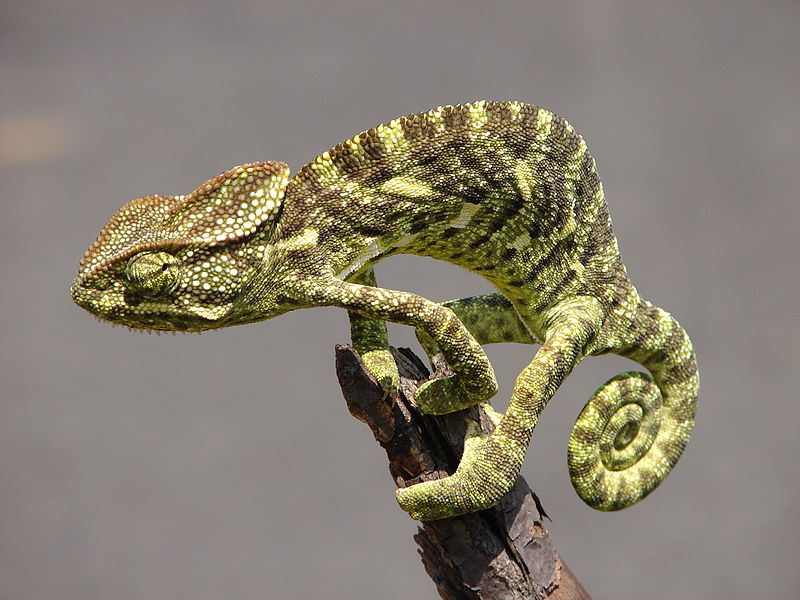Common Chameleon - BIO 203
Reproduction
Click here to return << Home >>
Chameleon reproduction takes place from July to December during
which the chameleons mate, the female chameleons lay eggs, and the
male chameleons’ testis size grows and eventually reverts back to
the original size as winter approaches (Ibrahim 2013). The mating
ritual consists of competition between males to mate with and guard
a female. Monogamy proves to be the main system of mating among
chameleons; however, in many cases polygyny can occur. Polygyny is a
system of reproduction in which the male reproduces with many
females. In chameleons, the male chameleon will protect a few
different females throughout the mating season, but will only guard
one at a time (Cuadrado 2000). The size of female chameleons
influenced greatly the lengths to which the male chameleons will go
to protect their mate. The male chameleons will guard female
chameleons for longer periods and earlier in the mating season if
the female is larger (Cuadrado 2000).
Additionally, during the mating season, the female chameleon
will change skin color. The shift is very apparent as yellow spots
arranged in a pattern. (Cuadrado 1998). After the female develops
the yellow spots, the males spend much more time with the female
guarding her and attempting to engage in sexual intercourse. While
the male is guarding the
 female, more chameleons will try to
approach the female chameleon if she is larger in size and has
developed the spots (Cuadrado 1998).
If an intruder approaches the female, the male chameleon
will protect the female more often by chasing away the predator
rather than fighting. The chameleon will puff out its chest by
inflating its lungs trying to appear bigger, exhibit courting colors
(Cuadrado 2000).
female, more chameleons will try to
approach the female chameleon if she is larger in size and has
developed the spots (Cuadrado 1998).
If an intruder approaches the female, the male chameleon
will protect the female more often by chasing away the predator
rather than fighting. The chameleon will puff out its chest by
inflating its lungs trying to appear bigger, exhibit courting colors
(Cuadrado 2000).
Through sexual reproduction, the females lay eggs during the fall,
bury the eggs in burrows that are about 35 cm deep that they have
dug, and these eggs hatch within 9 to 12 months (Díaz-Paniagua
2003, Cuadrado 1999).
Female chameleons in areas of Spain lay groups of about 15 eggs
during the fall that tend to hatch around August (Díaz-Paniagua
2003). These eggs have
flexible shells and are greatly dependent upon water for egg
metabolism, egg growth, success of hatching, and the
survival and body size of the offspring (Díaz-Paniagua
2003). Temperature
during the period of incubation also plays a critical role in the
development of the embryo; at higher temperatures, the embryo
develops more quickly, but at lower temperatures, the egg metabolism
has a higher rate of efficiency producing larger and heavier eggs
(Díaz-Paniagua et al.
2003). Similarly, when conditions are wet, the offspring produced
was heavier as result of the higher water absorption during the
offspring’s incubation period (Díaz-Paniagua
2003).